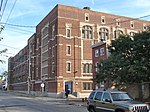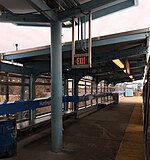Philadelphia Temple of Hemp and Cannabis
2019 establishments in Pennsylvania2019 in cannabisCannabis and religionCannabis in PennsylvaniaChurches in Philadelphia ... and 4 more
Infobox religious building with unknown affiliationNew religious movementsReligious organizations established in 2019Religious organizations using entheogens
Philadelphia Temple of Hemp and Cannabis (also called Philly THC) is a church in Philadelphia, Pennsylvania. The church interior features Rastafarian images, including a mural of Haile Selassie.It may be the first space for public consumption of cannabis in America east of the Missisippi River, following "a handful" in Denver and San Francisco around 2019. It may circumvent the state's laws against public smoking by offering "ceramic-tipped electronic devices" for consumption via dry herb vaporizer on premises.The venue has held other public events such as a public reading of Cannabis: The Illegalization of Weed in America by its author, Box Brown.
Excerpt from the Wikipedia article Philadelphia Temple of Hemp and Cannabis (License: CC BY-SA 3.0, Authors).Philadelphia Temple of Hemp and Cannabis
Frankford Avenue, Philadelphia
Geographical coordinates (GPS) Address Nearby Places Show on map
Geographical coordinates (GPS)
| Latitude | Longitude |
|---|---|
| N 39.9837 ° | E -75.1256 ° |
Address
Frankford Avenue 2514
19125 Philadelphia
Pennsylvania, United States
Open on Google Maps






